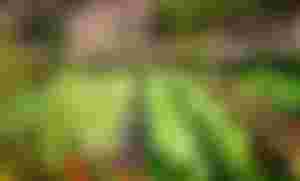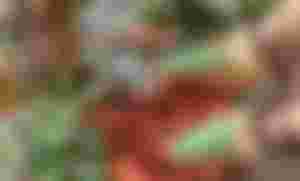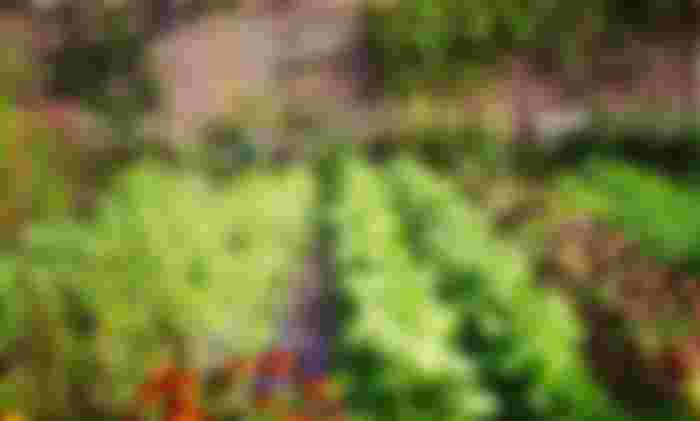Besides the sun, the plants in our garden need water, air and nutrients. Some are adapted to extreme conditions but for simplicity we will assume they will take the last three from the roots.
As I mentioned before, plants don't have intestines so they create mutualistic and symbiotic relationships with the microorganisms around the root system. This peculiarity makes it of vital importance to have a soil that is alive. Now, not all microorganisms are made equal. Some will develop parasitical relationships or will produce toxic byproducts. Usually, oxygen loving microorganisms are our friends and those who don't need/like oxygen are not the best company.
What do the microorganisms need?
They need:
Food: organic material to decompose.
Water: enough, not too much or the environment becomes anaerobic.
Air: worms usually take care of this.
To be protected from the sun: the sun kills them at contact.
Usually, we don't need to do all the work. Nature has it figured it out. We just need to help as much as we can and specially do not do silly things like turn the soil or strip it naked (with exceptions, and covering it as fast as possible).
When microorganisms work they will degrade the organic material and their byproducts will contain minerals, vitamins and other substances soluble in water that the plant can take in right away. Some will be adapted to work right on the root system, some will be around going about their business. Usually plants release substances to the ground that will help their "team" to have a comparative advantage over the others. They also pass information. For example, trees make networks with the help of fungus, in such a way that some forests have more connections than the human brain, and essentially can act as a whole organism.
Preparing the planting beds
If you start with a good enough soil, to have health happy plants in our different spaces we need to cover the planting space with at least 5 cm of compost and 5 cm of dry leaves or straw. It's important that they are layered and not mixed. We are going to do this every year (keep piling up on top).

This is the most straight forward method. For anyone who actually gets to do it and depending on the size of the plot, it's also not so easy to accomplish.
Some people just add straw once the system is established (lots of it, if you follow Ruth Stout advice), and others use chipped full trees (this is the Back to Eden method)
If you start with compacted soil, you will need to break it deep with a pitchfork to create spaces for air pockets, before adding the compost and straw (or dry leaves, or...).
if you start with sandy soil, you will need a lot more organic material. Think hugelkultur or lasagna gardening (more about this later).
As I mentioned in another article, a hugelkultur starts with wood, and covers it with dirt, compost and straw. If you have wood laying around, a hugelkultur cold be a good option, because it gives fertility for several years.
In any case, if you can afford to wait, you could simply cover the spot with organic matter and forget about it until the next season.
As you see there are different methods, and I didn't even mention my favorite one: lasagna gardening. Yet they all go after the same goal. Let's create an environment where there is soil already ready for the plants to feed, enough microorganisms to help out and food/shelter so they keep reproducing. covering the soil also provides an environment that retains water without getting soaky and gets rid or at least diminishes the competition to our plants.
With any of these systems we are going to prepare our seedlings in a different area and introduce the plants when they are already of at least 15 cm in size. We are going to open up the cover and plant on the compost, then close the cover around, and water to settle.
How I do it
I don't claim to have the best method around, but this is what I do and it works for me. I use an adaptation of the lasagna method.
Here is the situation, when I started my beds I had very healthy and tight grass and weeds. So I chose a method that would allow me to cover it up.
The lasagna method starts with paper or cardboard. These have to have no color and preferable not glue either. Instead of this I start with banana trunks cut open and separated in their folds. As I said here, banana trees are the cornerstone of my garden for different reasons. This one one of them. The idea is to make it very hard to the initial plants to keep thriving.
The second layer is unfinished compost, this includes rabbit manure, kitchen scraps, wood and tweaks, the compost that is only half way done, etc. This is food for the next generations of microbes and a good source of nitrogen for our plants.
Third layer is good soil/compost. This is the soil where we are going to plant. It has to have enough water soluble nutrients ready and the microbiology.
Finally, the cover. Again I use my banana trees, this time the dry leaves cut in little pieces. In places where I want it to look fancy, I use red woodchips that are beautiful, a bit expensive too. This provides cover to the soil, it makes it difficult for plants we don't want to establish, and in time it's a source of carbon, with is vital for our plants.

The cherry of the cake in my case could be considered controversial. (Have you seen those stunts where they say: kids, don't do this at home? You've been warned.) I use Himalayan salt to make sure the whole range of micronutrients is in my soil. How much? Just a tiny pinch in places away from where my roots will be. With this, a bit takes us a long way and if we use too much we can mess up big time. When I have access to ocean water I definitely prefer it over the other one. I use the pink salt because I don't completely trust that sea salt is really sea salt, and have no access to the ocean in my location.
Thanks for reading.
All comments are more than welcome. :)
Images: stock photos from Canva.

...and you will also help the author collect more tips.


thank you for sharing, i've always to start having my own edible garden in the near future. because in our place where I live, I have no space to set up one. I'm gonna save this post for my future reference 😊